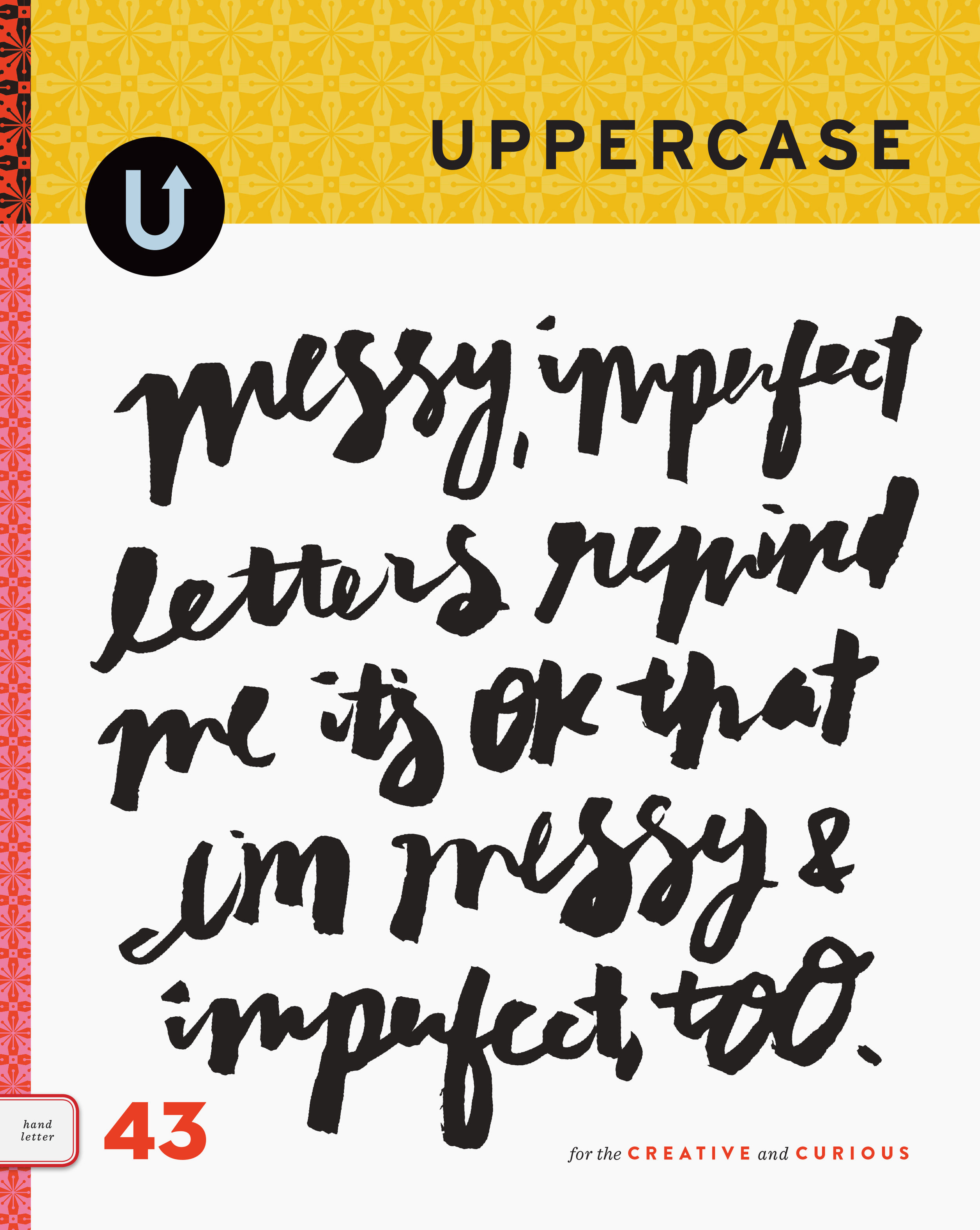Fossil
/There is very little advertising in each issue of UPPERCASE. This is partly by design since the few ads I do run have more impact for the advertiser and hold more interest for the reader (and leave more room for content!) but it is also out of necessity. Being a one-woman magazine operation means I don’t have a lot of time to dedicate to finding advertisers. My goal is to find two advertisers per issue—one for each of the inside covers—plus an assortment of Calling Card ads and Peeps round out each issue. I was happy when, out of the blue, the folks at Fossil contacted me about placing an ad in the current issue. They’re certainly the biggest brand that has advertised with UPPERCASE, but they’re also a great fit: with beautiful products that I personally already use (my watch, for example) and a company culture driven by design, Fossil has employed and supported many illustrators and designers within the larger UPPERCASE community.
I’ve been a solo designer pretty much my entire career, working my way up out of the room off the kitchen, the basement, a public gallery space and now to a nice studio office. But I’ve never worked for another company and I am particularly intrigued by how bigger brands nurture creativity and foster great work environments. I was curious about how UPPERCASE fits into life at Fossil so I reached out to Laura Pike-Seeley, the librarian at the Fossil headquarters in Richardson, Texas. (Please note that this profile was entirely initiated by me and is not a sponsored post.)
What kinds of books, magazines and reference materials are at the Fossil Library?
The Fossil Library is open to all employees, but specializes in connecting our design teams to Fossil’s shared creative resources. We have a variety of materials, from books on Expressionist woodcuts and jazz album covers to a circulating iPad full of digital magazine subscriptions.
Fossil subscribes to dozens of design journal titles, including, of course, UPPERCASE! Other popular titles include Kinfolk, Vogue Accessory, Wallpaper, Print and many more. We also hold management and leadership titles, graphic and watch design annuals and paper samples
In addition, the Library manages collections for our product design teams, the largest being our collection of retail and vintage samples. Imagine a circulating library, but instead of books, it’s bags, belts, textiles and anything else you can imagine.
How is the library curated?
You can’t always anticipate where creativity will lead people, so much of the collection development is in response to designers’ requests or from conversations with employees about the directions their work is taking. That said, the library fills gaps and anticipates user needs by acquiring titles that are crucial for a well-rounded design resource center to offer. The other major driver is our seasonal brand stories— the Fossil brand team helps to curate resources that will support their vision for upcoming seasons.
How did you hear about UPPERCASE magazine?
This first time I flipped through an UPPERCASE issue was at Salvage Ltd in Arlington, Massachusetts. When I came on over three years ago and started managing our journal subscriptions, UPPERCASE was a magazine I knew that the Library, as a resource center for hundreds of creatives, had to have. This impulse was confirmed over and over again, as it’s one of our most popular titles.
UPPERCASE is adored for its...
The magazine is so well curated and colorful—it just makes you smile. According to our designers, UPPERCASE is adored because it’s eclectic, practical and made for creatives by creatives. Charming, whimsical, surprising—these are all words used by our designers to describe UPPERCASE.
As many Fossil employees are lovers of historical ephemera, we are always delighted to see celebrations of the cultural paper trail in UPPERCASE—like the piece on ham radio cards from issue 20 and the midcentury letterhead feature from issue 19.
What kinds of materials are in the archives?
We’re currently celebrating Fossil’s 30th birthday, so our archives have been heavily mined this year. The archives contains packaging (we have a full archive of our signature watch tins), catalogs and mailers, advertising collateral, newsletters, press releases, merchandising props, and of course, product, including watches, bags, belts and clothing. Our digital archives holds commercials, internal videos and our art department’s work from the past twenty years or so. The archive is growing as we are striving to collect some of our oldest and rarest designs. And several times a year, the library works with design leaders to pick the best of the best designs to add to our seasonal archive.
What is the coolest item in the archive?
It's tough to pick just one! We do have some particularly great items seen in the retro future story, which is a recurring theme that has popped up again and again over the years at Fossil.
As early as 1991, you can see a retro-futuristic influence in Fossil's packaging and product. These robots, rockets, ray guns, galactic travelers and other symbols of other-worldly adventures were inspired by late 1950s visions of a fantastic future.
Fossil has looked to the story of retro future once again for the Holiday 2014 collection. Taking the best elements of midcentury design culture and infusing it with humor and whimsy is what Fossil does best.
How do designers at Fossil typically use the library services?
It’s a function of both reference and inspiration. Someone may need to get a better grasp on a subject they are already familiar with, or perhaps a topic they have been assigned to research, and we work together to locate the best resources. Other times, they come from a place of curiosity or a desire for new thinking. Our fully-automated library consists of about two thousand books—big enough to provide a little of most things design-related, but small enough to easily browse for inspiration, both in person and through the digital catalog.
How does the library assist the Fossil brand and company culture?
The Library is here for anyone to use for inspiration, reference, or simply a place to get away from your desk and computer for a little while. It’s a welcoming, open space that encourages creativity and collaboration, which are both so crucial to the Fossil identity. Quite simply, the Library is a creative haven.
Based on what people are interacting with in the library, can you see trends in style and design emerging?
It seems that one of the biggest developments in creative culture is a shift toward authenticity and craftsmanship, even as creatives retain a passion for technology and how it can support innovation in design. 3D printing, wearables, hackerspaces—these emerged from a desire to explore what role technology plays in self-expression, and the urge to find self-fulfillment through the creative process. Maker culture supports innovation that is practical, progressive and collaborative. It’s an emotional, optimistic movement that touches all aspects of design, especially at a company like Fossil that looks to both the history and the future of style and design to define our aesthetic.
Thank you to Laura and the team at Fossil for sharing these behind-the-scenes with us! For a look at Fossil design process, visit their blog. And please check out the Eley Kishimoto x Fossil collaboration that is advertised in the current issue—it's full of pattern designs plus some really bold retro-inspired watch designs. Would you or your brand like to advertise in the pages of UPPERCASE next year? Download the media kit over here.















